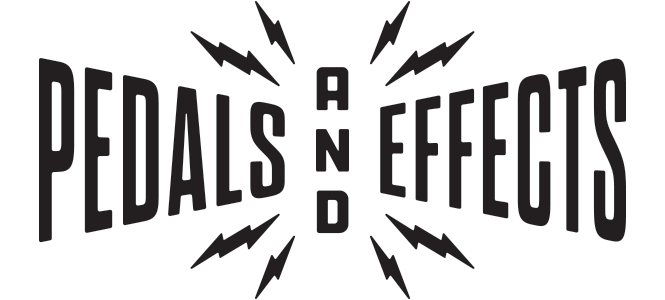Throwback Thursday: Interview with Kenny Aaronson
/I learned of Kenny Aaronson back when I was in Racer X, because he was the bassist that got all the gigs. I would see him on TV and in videos all the time with his greased back hair and amazing abilities. After some time, I stopped seeing him as often and figured he got tired of traveling and transitioned into a session player, but I never knew for certain.
My very good friend, bassist and journalist Freddie Villano, recently tracked Kenny down and got an exclusive interview with him for Pedals And Effects; it turns out he hit a major roadblock with his health and dealt with the repercussions for years.
I hope you’ll take the time to read about his incredible journey, and I am glad Kenny is still grinding. He’s an inspiration to all bassists, myself included.
Brooklyn-born bassist Kenny Aaronson has probably experienced higher highs and lower lows in his career than someone riding Coney Island’s famed Cyclone roller coaster. In 1973, he joined the New York band Stories, whose single, “Brother Louie,” reached #1 on the Billboard, Cashbox and Record World charts. From the mid ’70’s through the late ‘80’s he was the go-to bassist for rock royalty, including Bob Dylan, Rick Derringer, Joan Jett, Billy Squier, HSAS (Hagar, Schon, Aaronson and Shrieve), Billy Idol, Hall & Oats, Foghat and Brian Setzer, to name but a few. This amazing run culminated with Rolling Stone magazine naming him “Bassist of the Year” in 1988 and performing in the house band for the MTV Guitar Greats Show featuring Steve Cropper, Tony Iommi, David Gilmour and others. That same year he also made a significant contribution to the Dr. Licks transcription book Standing in the Shadows of Motown: The Life and Music of Legendary Bassist James Jamerson, performing Jamerson classic bass lines on “Love is Like An Itching in My Heart” (The Supremes), “Strange I Know” (The Marvelettes) and “This Old Heart Of Mine” (The Isley Brothers).
Sadly, this amazing trajectory came to an end when he was diagnosed with skin cancer in 1989. Though he recovered, the stigma of being a potential liability on the road remained and his phone eventually stopped ringing. By the time the bottom fell out on his playing career, Aaronson was working as a salesman at Rudy’s Music on 48th Street in NYC—a good job mind you, but not where someone with Aaronson’s pedigree should be wittling away the hours.
He eventually put an end to the day job when he hooked up with little-known singer/songwriter John Eddie, with whom he found two things that remained elusive throughout his years as a sideman: steady work and steady pay.
As of 2011, Aaronson’s career has been on the upswing. After spending the better part of twenty years working solely with Eddie, he hooked up with the New York Dolls for some touring with Mötley Crüe and Poison. Though the Dolls have since disbanded, Aaronson is now busy promoting the release of some music that actually started him on this incredible journey.
Before receiving all of the accolades as a rock solid sideman, Aaronson was a teenage whiz kid on bass, holding down the bottom end and flying of the fingerboard for proto-metal band Dust, a Brooklyn-based group that also included a pre-Ramones Mark Bell (aka Marky Ramone) on drums and future Kiss producer Richie Wise on guitar and vocals. Sony/Legacy recently re-released the first two, and only, Dust albums: their eponymous debut (1971) and the follow-up, Hard Attack (1972), on a remastered, single CD. Songs like “Suicide” and “Loose Goose” feature Aaronson’s wicked chops and gnarly tone and allow him to stretch out in ways seldom heard during all those years as a sideman.
Who are some of your influences?
I totally love Jack Bruce. Jack was a huge early influence. And I love the Ox {John Entwistle} too, along with Tim Bogert, Paul Samwell-Smith, James Jamerson and John Paul Jones.
Do you use effects much?
You know I never used effects that much, other than with Rick Derringer—I used an MXR Phaser and, on occasion, I used Rick’s Jet Phaser (Roland Jet Phaser AP-7). I’ve used the BOSS octave pedal from time to time and the BOSS chorus, as well, back in the ’70’s and ’80’s, but not much since. Lately I’ve been using my Sola Sound fuzz pedal from around 1969 or 1970 and it fucking rocks!
What basses did you use in Dust?
On the first album, I played a Fender Mustang bass, probably a ‘68 or so, that I no longer have. On Hard Attack I used my ‘58 Precision bass that I still have.
The tone on you solo in “Suicide” is pretty vicious, what amps were you using?
The solo on “Suicide” was done through Richie‘s Marshall with one 4X12 bottom. Richie‘s Marshalls were the ones with the woven mesh speaker grilles, not the paper ones. I used a pick for that too.
As far as bass amps go, I was talking to Richie the other day and told him I couldn’t remember what amps I used. It is possible I used an Acoustic 360, but it is also possible I used either a Standel Super Imperial with 2X15 JBL d130 speakers or a Standel Artist 12 with 2×12 Jensen speakers. Both amps were the models with top mounted controls, but I’m not sure what year those were manufactured. As far as other amps I used with Dust, there were four Bruce amps with 2X15 speakers in each cab.
At one brief moment in time I used a Rickenbacker bass with “Rick-O-Sound” with the neck pickup through an Acoustic 360 and the bridge pickup through a Sunn Coliseum.
What can people expect from the Dust re-issue?
When you listen to those records you’re listening to three high school drop-outs playing their hearts out because to me, anyway, that was my future. I couldn’t see myself doing anything else. It was “PLAY BASS OR DIE!”
All of the gear Kenny mentioned can be found on Reverb.com!
Thank you Freddie Villano for this interview! – Juan










